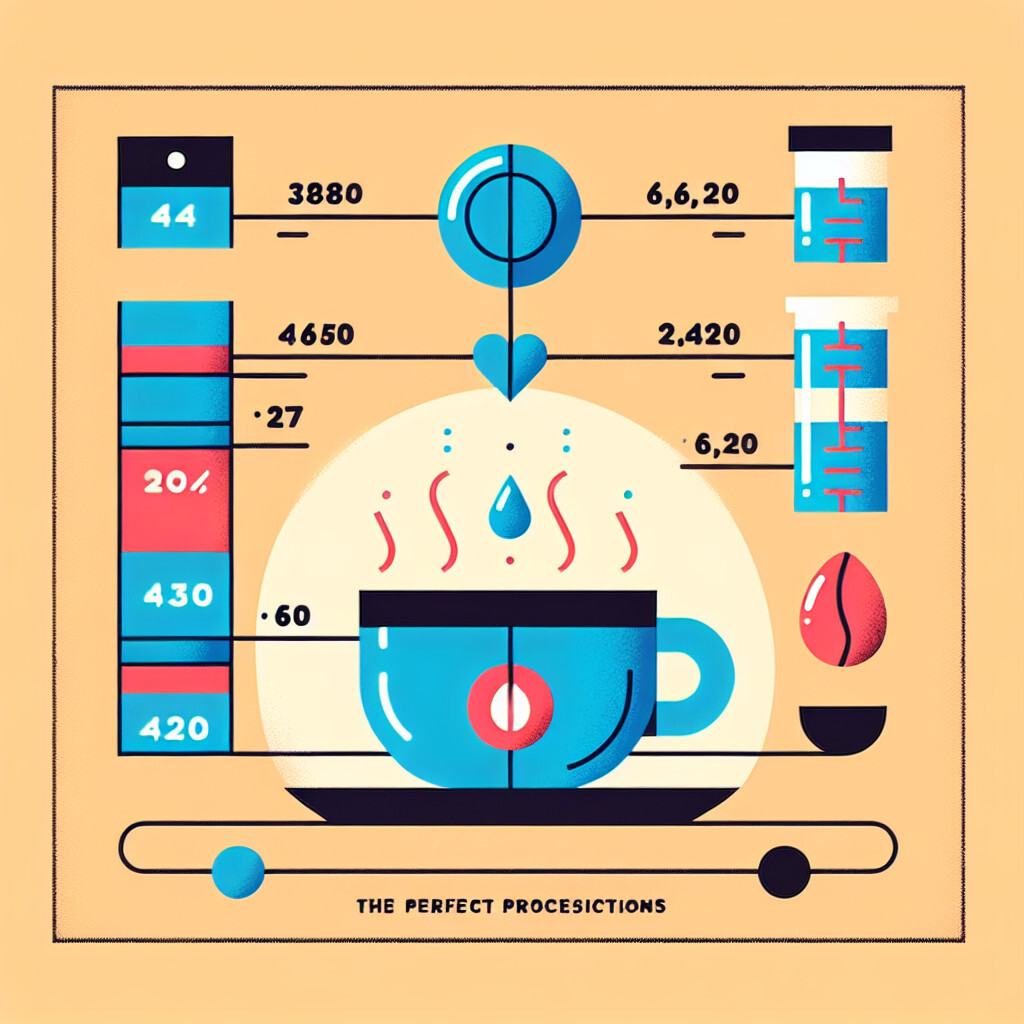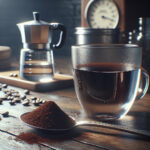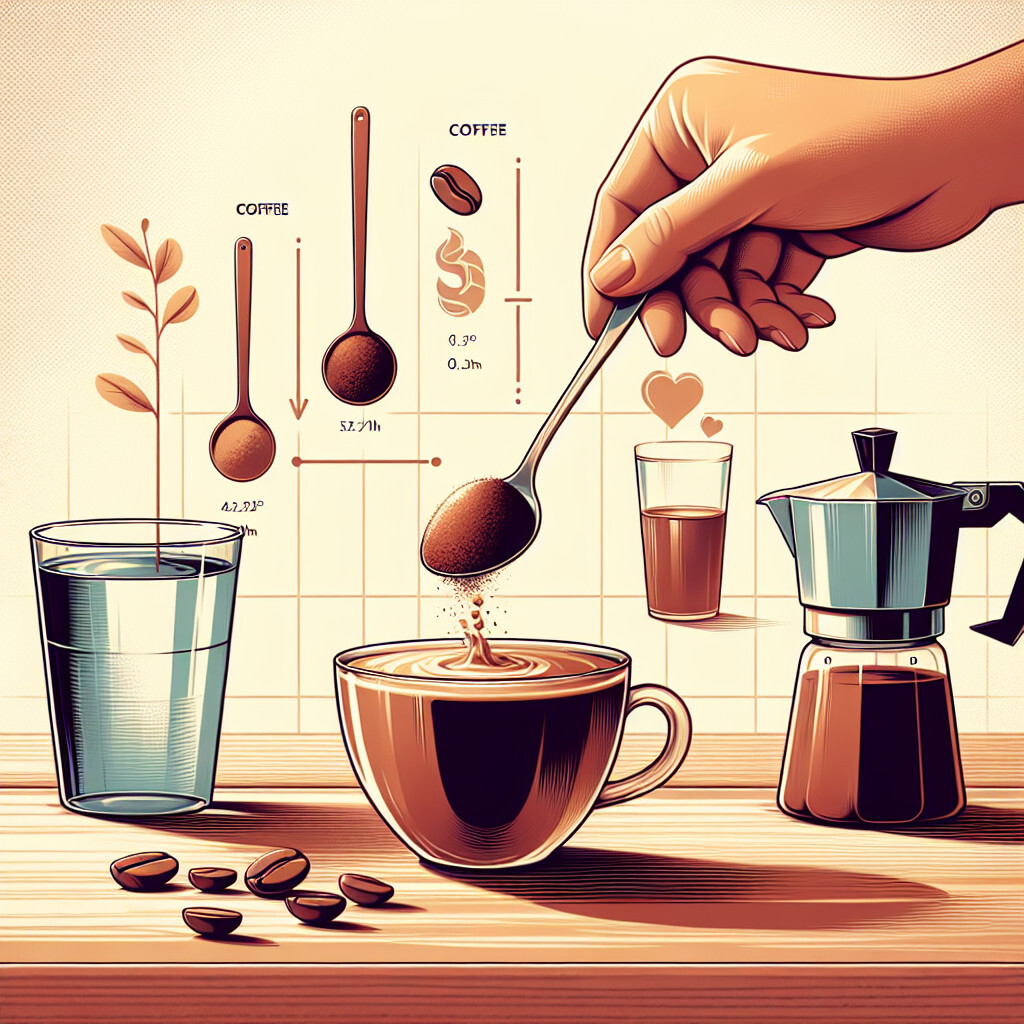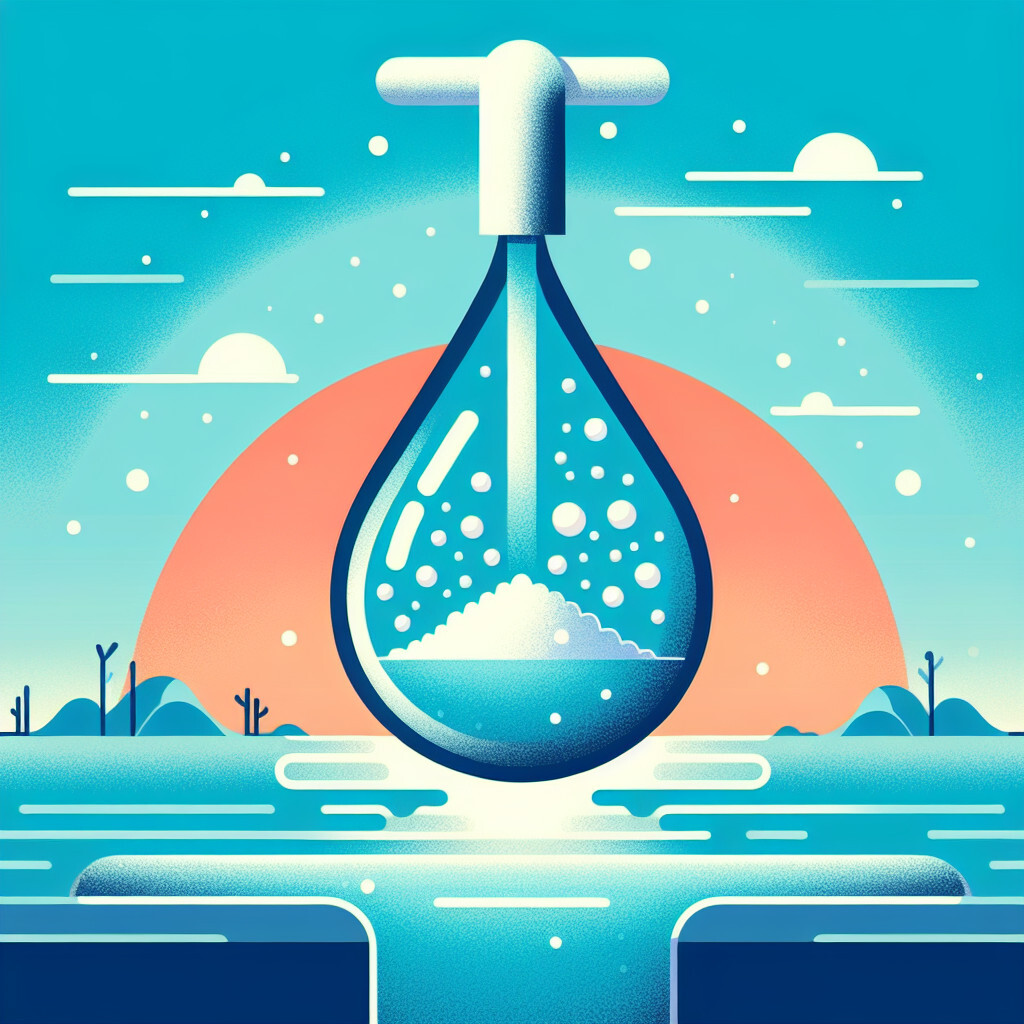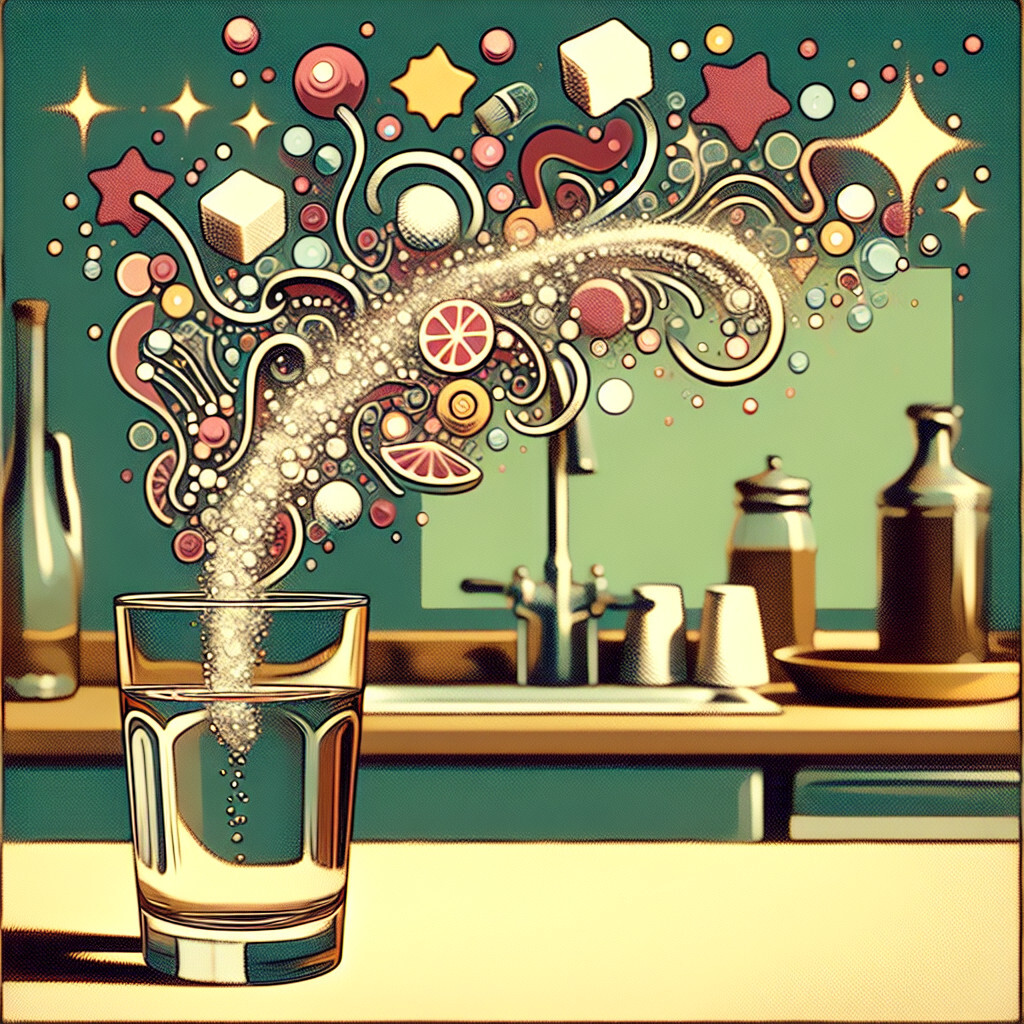-
Table of Contents
- Introduction
- Understanding the Perfect Water to Coffee Ratio for One Cup
- The Science Behind Measuring Water and Coffee for a Single Serving
- Mastering the Art of Brewing: How Much Water and Coffee for One Cup?
- The Ideal Balance: Determining the Right Amount of Water and Coffee for One Cup
- Q&A
- Conclusion
“1 cup of water, 1 tablespoon of coffee: Perfect balance for your perfect cup.”
Introduction
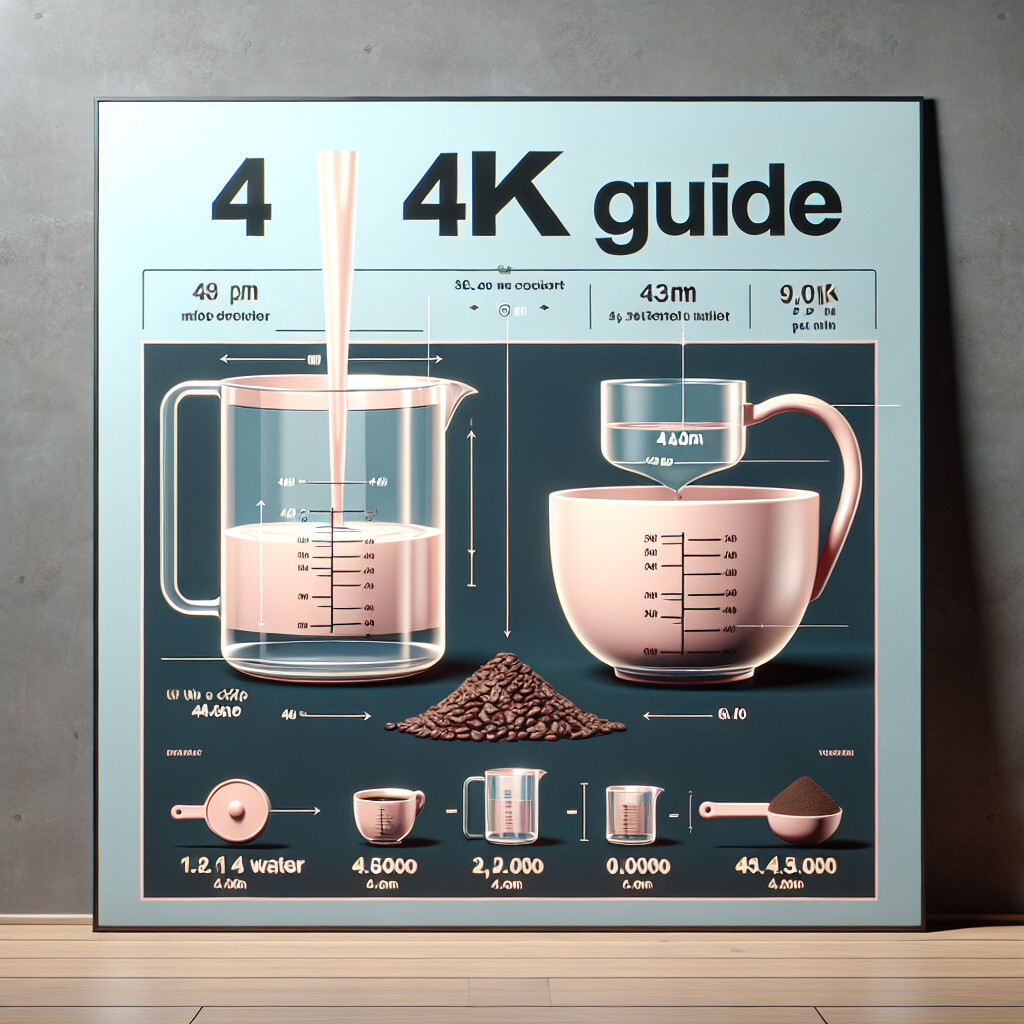
To prepare one cup of coffee, you typically need about 8 ounces (240 milliliters) of water and 2 tablespoons (approximately 10 grams) of ground coffee. This can vary slightly depending on personal taste and the specific brewing method used.
Understanding the Perfect Water to Coffee Ratio for One Cup
Understanding the perfect water to coffee ratio for one cup is an essential skill for any coffee enthusiast. It is the key to brewing a cup of coffee that is not only flavorful but also balanced and satisfying. The right ratio can make the difference between a cup of coffee that is too weak or too strong, and one that is just right.
The standard ratio recommended by most coffee experts is one to two tablespoons of coffee for every six ounces of water. This ratio is based on the assumption that the coffee is ground to a medium coarseness, which is the most common grind size for drip coffee makers. If the coffee is ground finer or coarser, the ratio may need to be adjusted accordingly.
However, this is just a starting point. The perfect ratio can vary depending on personal taste, the type of coffee being used, and the brewing method. Some people prefer a stronger cup of coffee and may use a higher coffee to water ratio, while others prefer a milder flavor and may use less coffee. Similarly, darker roasts typically require less coffee than lighter roasts to achieve the same strength, due to the higher concentration of flavor compounds in the beans.
When it comes to brewing methods, different techniques require different ratios. For example, a French press typically requires a higher coffee to water ratio than a drip coffee maker, due to the longer brewing time. On the other hand, an espresso machine requires a much higher ratio due to the short brewing time and high pressure.
It’s also important to note that the quality of the water used can significantly affect the taste of the coffee. Ideally, the water should be fresh and free of any strong tastes or odors. It should also be heated to the right temperature, typically between 195 and 205 degrees Fahrenheit. Using water that is too hot can over-extract the coffee and result in a bitter taste, while water that is too cool can under-extract the coffee and result in a weak flavor.
Once the right ratio has been determined, it’s crucial to measure the coffee and water accurately. Using a kitchen scale can help ensure that the measurements are precise. It’s also a good idea to keep a record of the ratios used and the resulting taste, to help fine-tune the process over time.
In conclusion, understanding the perfect water to coffee ratio for one cup is a combination of science and personal preference. It involves understanding the characteristics of the coffee being used, the brewing method, and the desired strength of the coffee. It also requires careful measurement and adjustment, as well as a willingness to experiment and refine the process. With practice and patience, anyone can master the art of brewing the perfect cup of coffee.
The Science Behind Measuring Water and Coffee for a Single Serving
The art of brewing the perfect cup of coffee is a science in itself, a delicate balance of the right amount of water and coffee. The ratio of water to coffee is a critical factor that influences the taste, aroma, and strength of your coffee. Understanding the science behind measuring water and coffee for a single serving can significantly enhance your coffee brewing experience.
The golden ratio, as it is often referred to in the coffee world, is a general guideline that suggests the ideal amount of coffee to water. This ratio is typically 1:15 or 1:18, meaning for every one part of coffee, you should use 15 to 18 parts of water. However, this ratio can be adjusted based on personal preference. If you prefer a stronger, more robust cup of coffee, you might opt for a 1:12 ratio. Conversely, if you prefer a lighter, less intense coffee, a 1:20 ratio might be more suitable.
To put this into perspective, let’s consider a standard cup of coffee, which is typically 8 ounces (237 milliliters). Using the 1:15 ratio as a starting point, you would need approximately 0.53 ounces (15 grams) of coffee for 8 ounces of water. This equates to roughly one tablespoon of coffee. However, it’s important to note that this is a general guideline and the actual amount can vary depending on the type of coffee and the brewing method used.
The type of coffee plays a significant role in determining the amount of coffee needed. For instance, darker roasts are denser and therefore require less coffee compared to lighter roasts. Similarly, the grind size can also affect the amount of coffee needed. Finer grinds expose more surface area of the coffee to water, resulting in a stronger brew. Therefore, less coffee is needed when using a finer grind.
The brewing method is another factor that can influence the coffee to water ratio. Different brewing methods, such as French press, pour-over, or espresso, require different amounts of coffee and water. For example, a French press typically requires a 1:12 ratio, while a pour-over might require a 1:16 ratio. An espresso, on the other hand, requires a much stronger ratio of 1:2.
The water temperature is another critical factor in brewing coffee. The Specialty Coffee Association recommends a water temperature between 195 to 205 degrees Fahrenheit (90 to 96 degrees Celsius) for optimal extraction. Water that is too hot can over-extract the coffee, leading to a bitter taste, while water that is too cool can under-extract the coffee, resulting in a weak and underdeveloped flavor.
In conclusion, the science behind measuring water and coffee for a single serving is a complex interplay of various factors, including the coffee to water ratio, the type of coffee, the grind size, the brewing method, and the water temperature. Understanding these factors and how they interact can help you brew a cup of coffee that is perfectly tailored to your taste. So, the next time you brew a cup of coffee, remember that you’re not just making a beverage, you’re conducting a delicious science experiment.
Mastering the Art of Brewing: How Much Water and Coffee for One Cup?
Mastering the art of brewing coffee is a skill that requires precision, patience, and a keen understanding of the delicate balance between water and coffee. The perfect cup of coffee is a symphony of flavors, a harmonious blend of bitterness and sweetness, acidity and body. Achieving this balance is largely dependent on the ratio of water to coffee. Too much water and the coffee will be weak and under-extracted; too little, and it will be strong and over-extracted.
The standard measure for brewing coffee of proper strength is two tablespoons of coffee per six ounces of water. This ratio is often referred to as the “Golden Ratio” in the coffee world. However, this is not a hard and fast rule, but rather a starting point. Personal preference plays a significant role in determining the perfect ratio. Some people prefer their coffee stronger, while others like it milder. Therefore, it is advisable to experiment with different ratios until you find the one that suits your taste buds best.
When it comes to measuring coffee, it is important to note that a “cup” in coffee brewing terms is not the same as a standard measuring cup. A “cup” in coffee parlance is typically six ounces, not eight. Therefore, if you’re using a standard measuring cup to measure your water, remember that it holds eight ounces, not six. This discrepancy can lead to confusion and potentially a weaker cup of coffee if not accounted for.
The quality of the water used in brewing coffee is another crucial factor to consider. Coffee is 98% water, so the quality of the water will significantly impact the taste of the coffee. It is recommended to use filtered or bottled water if your tap water has a strong taste or odor. Hard water, which is high in mineral content, can interfere with the extraction process and lead to under-extracted, weak coffee. On the other hand, soft water can over-extract the coffee, making it bitter and strong.
The temperature of the water is also critical in brewing coffee. The ideal temperature is between 195 to 205 degrees Fahrenheit. Water that is too hot can over-extract the coffee, leading to a bitter taste. Conversely, water that is not hot enough can under-extract the coffee, resulting in a weak and underdeveloped flavor.
Lastly, the grind size of the coffee plays a significant role in determining how much water you should use. A finer grind will require more water for extraction, while a coarser grind will require less. This is because a finer grind has a larger surface area, allowing more water to come into contact with the coffee and extract its flavors.
In conclusion, mastering the art of brewing coffee involves understanding the delicate balance between water and coffee. The “Golden Ratio” of two tablespoons of coffee per six ounces of water is a good starting point, but personal preference should ultimately guide your brewing process. The quality and temperature of the water, as well as the grind size of the coffee, are also important factors to consider. With patience and practice, you can master the art of brewing the perfect cup of coffee.
The Ideal Balance: Determining the Right Amount of Water and Coffee for One Cup
The art of brewing the perfect cup of coffee is a delicate balance of several factors, among which the ratio of water to coffee plays a pivotal role. The ideal balance between these two ingredients can significantly influence the taste, aroma, and overall quality of your coffee. This article aims to provide a comprehensive guide on determining the right amount of water and coffee for one cup.
The Specialty Coffee Association (SCA) recommends a standard water to coffee ratio of 18:1, which translates to approximately 18 grams of water for every gram of coffee. This ratio is widely accepted as the golden rule in the coffee brewing world. However, it’s important to note that this ratio is not set in stone and can be adjusted according to personal preference. Some coffee enthusiasts prefer a stronger brew and may opt for a lower water to coffee ratio, while others who prefer a milder taste may increase the water ratio.
The type of coffee beans and the brewing method can also influence the water to coffee ratio. For instance, darker roasts generally require less coffee as they have a stronger flavor, while lighter roasts may require a bit more to achieve the desired taste. Similarly, different brewing methods such as French press, pour-over, or espresso each have their own recommended ratios. For example, a French press typically requires a 12:1 ratio, while an espresso shot requires a much stronger 3:1 ratio.
The quality of the water used for brewing is another crucial factor to consider. Water makes up about 98% of a cup of coffee, so using high-quality water can significantly improve the taste of your coffee. It’s recommended to use filtered or bottled water that’s free from impurities and has a neutral pH level. The temperature of the water is also important, with the ideal range being between 195 to 205 degrees Fahrenheit. Water that’s too hot can over-extract the coffee and make it taste bitter, while water that’s too cool can under-extract the coffee and result in a weak flavor.
The grind size of the coffee beans can also affect the water to coffee ratio. Finer grinds have a larger surface area and can extract more flavor from the same amount of coffee, so they require more water. On the other hand, coarser grinds have a smaller surface area and require less water. It’s important to adjust the grind size according to the brewing method, as each method requires a different grind size for optimal extraction.
In conclusion, determining the right amount of water and coffee for one cup is a complex process that involves several factors. The standard water to coffee ratio of 18:1 is a good starting point, but it can be adjusted according to personal preference, the type of coffee beans, the brewing method, and the quality of the water. The grind size of the coffee beans is another important factor to consider. By understanding and carefully adjusting these factors, you can brew a cup of coffee that perfectly suits your taste.
Q&A
Question 1: How much water is needed to make one cup of coffee?
Answer 1: Typically, you need 6 ounces of water to make one cup of coffee.
Question 2: How much coffee is needed to make one cup?
Answer 2: Generally, you need 2 tablespoons of ground coffee to make one cup.
Question 3: Can the amount of water and coffee be adjusted for different strengths?
Answer 3: Yes, you can adjust the amount of water and coffee to make the coffee stronger or weaker according to your preference.
Question 4: What happens if too much water is used for one cup of coffee?
Answer 4: If too much water is used, the coffee will be diluted and may taste weak.
Conclusion
In conclusion, to make one cup of coffee, you typically need about 1 to 2 tablespoons of ground coffee and 6 to 8 ounces of water.

